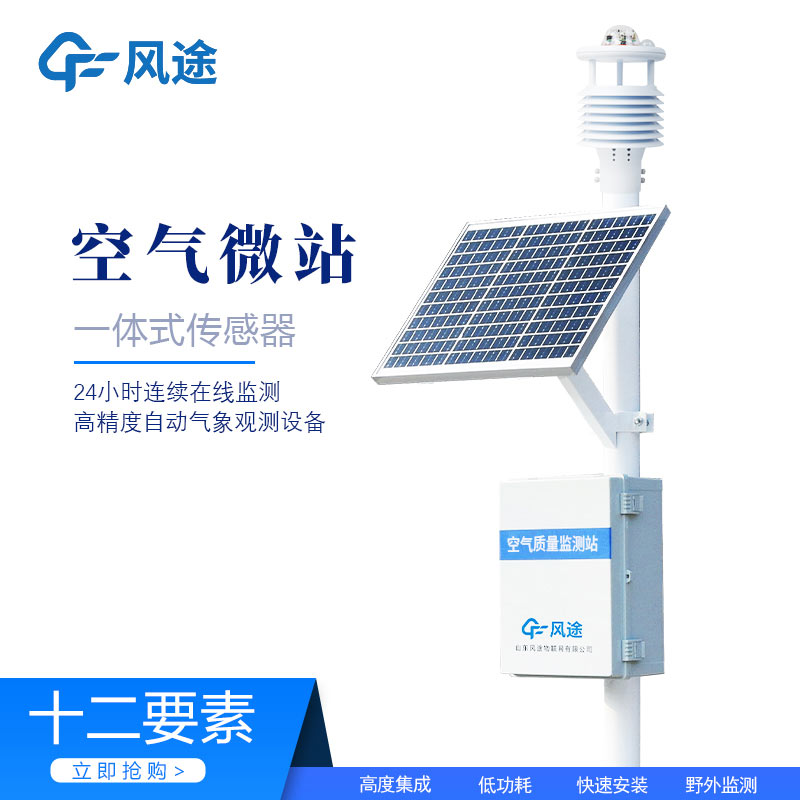Tianyi Sensor IOT Technology Co., Ltd
Sales Manager:Ms. Emily Wang
Cel,Whatsapp,Wechat:+86 15898932201
Email:info@fengtutec.com
Add:No. 155 Optoelectronic Industry Accelerator, Gaoxin District, Weifang, Shandong, China

Sales Manager:Ms. Emily Wang
Cel,Whatsapp,Wechat:+86 15898932201
Email:info@fengtutec.com
Add:No. 155 Optoelectronic Industry Accelerator, Gaoxin District, Weifang, Shandong, China
time:2025-03-26 10:00:20 source:Weather Station viewed:185 time
Air quality monitoring stations for road traffic primarily aim to conduct real - time monitoring of air quality in traffic - intensive areas. They integrate data from environmental monitoring networks, meteorological parameters, and vehicle - related information. By doing so, these stations analyze the impact of vehicle emissions on the atmospheric environment, providing essential data support for pollution control initiatives.
With the acceleration of urbanization and the increasing number of motor vehicles, traffic - related pollution has emerged as a prominent issue. Air pollution on urban roads accounts for a significant proportion, posing threats to public health and undermining the urban ecosystem. To implement the Air Pollution Prevention and Control Law, local authorities have installed intelligent monitoring terminals at major traffic arteries. These terminals monitor pollution around the clock, enabling full - process control over air pollution.
Currently, in the context of urban air pollution control, the prevention and control of mobile - source pollution are of crucial importance. In addition to fixed - site monitoring stations, road dust mobile monitoring technology offers a flexible regulatory solution. The combination of multiple monitoring methods can effectively control pollutant concentrations and provide a basis for traffic planning.
Key cities in China have established a new traffic - environment monitoring system. This system routinely monitors six core parameters, and can be extended with additional monitoring modules. Monitoring devices use either suction - type or diffusion - type sampling methods, analyzing samples based on a variety of detection principles. Relying on the Internet of Things (IoT) and big data technologies, monitoring data can be presented in real - time across multiple terminals, facilitating environmental decision - making.
The construction and application of road traffic Air quality monitoring stations mainly focus on six major air pollutants, namely “four gases and two dusts” (sulfur dioxide - SO₂, nitrogen dioxide - NO₂, carbon monoxide - CO, ozone - O₃, fine particulate matter - PM2.5, and inhalable particulate matter - PM10). Based on this fundamental monitoring framework, the system is highly flexible. It can be further expanded to include monitoring modules for other pollutants such as carbon dioxide (CO₂) and volatile organic compounds (VOCs) according to actual needs, enabling more comprehensive air quality monitoring.
Monitoring instruments use either pump - suction or diffusion sampling methods to efficiently collect ambient air samples. During sample analysis, high - precision sensor modules analyze samples in depth based on scientific monitoring principles such as electrochemistry, light scattering, photoionization detection (PID), and non - dispersive infrared spectroscopy (NDIR). This allows for accurate determination of the concentration values of various pollutants.
Data is transmitted via a stable and reliable network to an analysis platform that integrates big data and IoT technologies. On this platform, data undergoes strict integration, analysis, and comparison. Ultimately, the thoroughly processed air quality data can be presented intuitively and in real - time on multiple terminal devices, including mobile phones, web platforms, and large - screen displays. This provides convenient data - querying and usage experiences for different user groups, including environmental managers and the general public, and contributes to the accurate monitoring and effective control of air quality.

Dust pollution refers to an open-air pollution phenomenon where ground dust is blown into the atmosphere by wind, human activities, or other factors. In ambient air, it is a component of total suspended particles (TSP) and poses a severe threat to atmospheric environmental quality. There are various...
Weather conditions have always been a key factor affecting crop growth and harvest. Alas! Frequent meteorological disasters have brought great crises to agriculture!Drought, a common meteorological disaster, results from prolonged precipitation scarcity, leading to soil water shortage and dry air. C...
Traditional air quality monitoring stations (national and provincial control points) use extremely sophisticated and expensive equipment, resulting in very high construction and operational costs. Consequently, a city typically has only a handful of such stations. Due to the limited number of statio...
Traditional flow measurement involves trekking through mountains and rivers, enduring sun and rain, while modern technology can achieve fully automatic monitoring with just one device.River flow measurement is a crucial part of water conservancy work, directly related to flood control, drought relie...